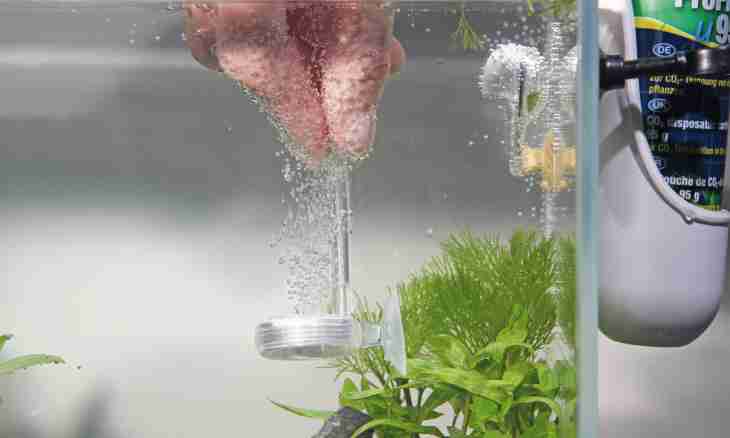Many fans of aquarium fishes ask a question and why in general to clean a bottom at an aquarium, in natural reservoirs nobody specially cleans a bottom, plants well grow and fishes cheerfully swim. The fact is that aquariums have the volume, small in comparison with natural reservoirs, fishes emit excrements, and the remains unfinished them a stern fall on a bottom and begin to rot, spoiling at the same time water and giving green light for development of pathogenic microbes which can perniciously affect both small fishes, and aquarian plants.
Instruction
1. For cleaning of a bottom there are special filters, however, they not very well cope with the duties. Still the best and effective way of cleaning of a bottom of an aquarium is cleaning through a siphon. You see one of such devices on the picture at the left. The siphon consists of a flexible ridge hose on the one side of which pear, and on the other hand the plastic dilator with a ground grid on the end that in the course of cleaning of a bottom of an aquarium in a siphon accidentally did not drain in some "stood gaping" small fish is placed! Before cleaning a bottom, take out carefully from an aquarium large stones and also plants without roots which these stones pressed to a bottom and did not allow to emerge, then clean a special scraper from an aquarium wall raid. When the dirt which is scratched out from walls falls by a bottom, lower a siphon in an aquarium, without forgetting to put an empty bucket below water level. Having pressed several times pear, suck in water in a siphon. At the same time the direct current of water is formed and now it is necessary only to drive a hose on a bottom of an aquarium and between stones, merging all dirt through a hose in a bucket. At this procedure, for the best cleaning of a bottom, move soil pebbles the end of a hose a little. At strong pollution sometimes it is necessary to take out a siphon from an aquarium to clean the dilator grid hammered with dirt.
2. If near at hand there was no special siphon for cleaning of an aquarian bottom, the usual rubber hose will be able quite to replace it. In this case the suction of water is done or by means of usual rubber pear, or, in the absence of that, the suction is done by a mouth, approximately as motorists merge gasoline. However in this case it is necessary to do a suction very quickly not to swallow inadvertently aquarian water. Besides, it is necessary to watch that small fishes, especially the smallest, did not drain in through a hose in a bucket. It can not only frighten small fishes, but also injure them, especially those which are proud of the big and beautiful fins and tails! Especially often sucks in more sluggish fishes, for example, of the guppy.
3. Well and it is natural, every day after feeding of fishes delete unfinished with them the forage remains. Usually it becomes the simplest adaptation which is the glass tube with rubber pear on the end getting on length to the bottom of an aquarium. If you use dry feeds for feeding of fishes, then delete their remains from an aquarium at once as small fishes gorged on and departed from a feeding trough. The forage falls by a bottom, as a rule, in the same place — under an aquarian feeding trough. Take out a feeding trough that it did not disturb you, lower a glass tube to the bottom, sucking in pear the forage remains. If not to make it in time, then in an hour aquarian water can already dim as the dry feed is great food for millions of bacteria which begin to breed in a geometrical progression.
4. You clean an aquarian bottom capitally at least once a month, draining at the same time no more than 30% of water. The drained water is replaced fresh, otstoyanny and it is obligatory the same temperature, as the main water in an aquarium. Also remember that maintenance of purity in an aquarium — guarantee of health of your pets!

